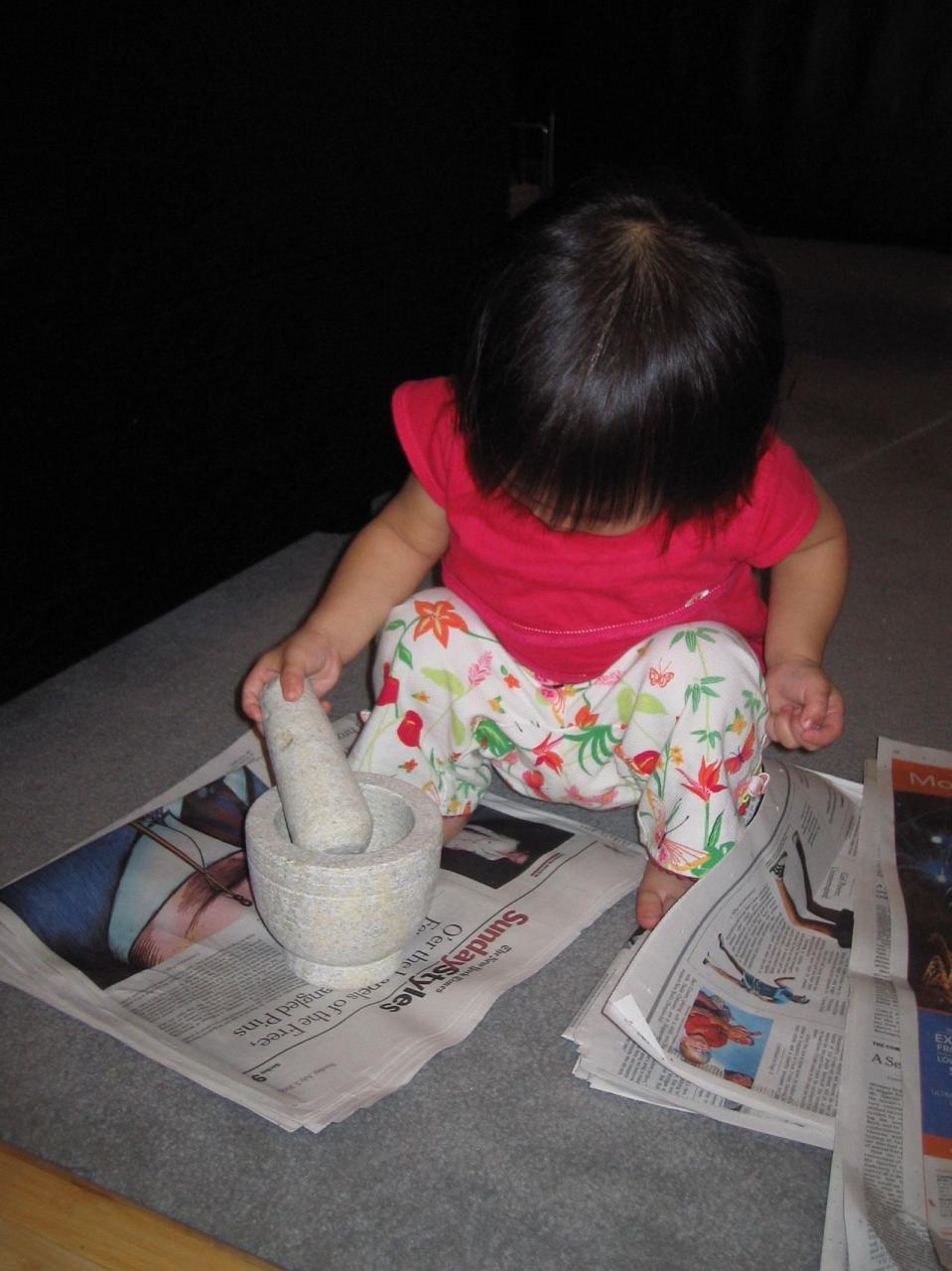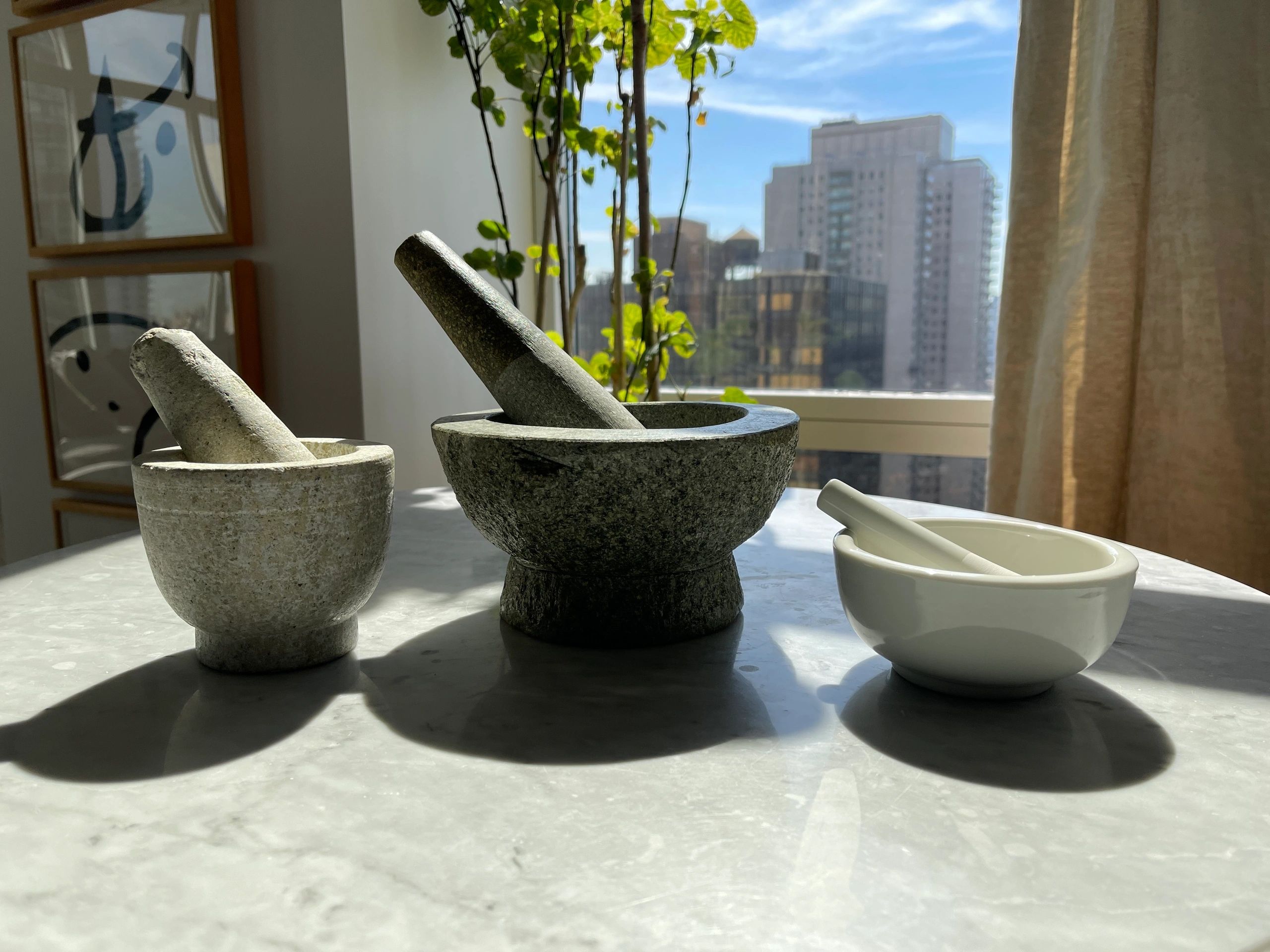The typical mortar and pestle used by Nonyas is the one pictured in the middle.
In my previous blog, I had written about Koh Poh Beng Neo, my grandaunt who had taught me how to pound in the right sequence. She had described to me that potential mothers-in-law went searching for prospective brides and judged their cooking proficiency by the pounding rhythm and fineness of their rempah spice paste.
The equipment of old was the batu lesong (mortar and pestle). To this day, I believe that using a batu lesong produces a more refined spice paste. The subtle nuance was something my father could distinguish instantly when he tasted my cooking and he would criticize if I had used a blender. As I had written in my cookbook,
“Many Nonya dishes require spices to be blended into a fine paste before cooking. For years, I ground my spices with an electric blender. However, after trying out the traditional mortar and pestle to pound a spice blend, I could discern the difference in the taste of the dish. There was more pronounced kick and tighter fusion of spices brought about by the pounding”, as opposed to using the electric blender. “Olden-day Nonyas could not live without their mortar and pestle. Pounding was called tumbok-tumbok”.
In my cookbook, I described how with a new mortar, “my mother pounded dry grated coconut to absorb the grit tucked into the micro fine crevices of the new mortar. You should pound the coconut until it leaves a shine to the surface of the mortar and pestle and it replaces the smell of the granite. The mortar would eventually achieve a smooth surface after pounding many times over. This is essential so that bits of a spice paste would not get stuck in the tiny cracks and crevices. These days, new mortars come with smoothened surfaces but buyer beware, most are also made of a more inferior granite that is not held in the same regard by the older Nonyas.” So don’t discard your grandmother’s and use it as a decorative flower pot!
As my Aunty Paddy shared with me while I was researching for my book, “a Nonya superstition is that you should stop using your batu lesong if the mortar is wearing thin. You must not crack it, otherwise it would be bad luck. Whether it is to avoid the risk of wasting paste that required a chunk of time to pound, or truly, to avoid ill fortune, another superstition admonishes you not to cross or walk over a batu lesong. The Nonyas would scream ‘janggan langga!’ (don’t knock it over.)”
I have also included in the photograph, a French mortar and pestle (extreme right in the photo). The French use a daintier mortar and pestle, almost like a chemist’s, in which they pounded their black pepper and bay leaves. It is too small a cavity, to accommodate the pounding of the rempah spice paste. The ingredients would be flying out and staining your kitchen wall, especially if turmeric is involved. What I sometimes do is to blend first (in the right sequence instructed in my book), and then pound in batches.

My daughter, a sixth-generation, learning to pound like a real Nonya.
